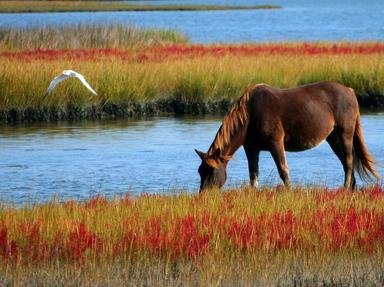Quiz Answer Key and Fun Facts
1. Although natives of Scotland, this breed of draught horse is now closely associated with a certain American brand of beer. Which breed is this?
2. Native to the United States, the pictured horses display the colorful leopard-spotted coat pattern for which this breed is best known. Which breed is this?
3. Dating back some 4,500 years, the pictured horse which is noted for its wedge-shaped head, broad forehead, arched back and high tail carriage is one of the oldest known breeds of horse. Which breed is this?
4. The most famous Russian horse breed, it is known for its hereditary fast trot and outstanding speed and stamina. Which breed is pictured here?
5. Originating in Spain, these feral horses can now be found in western North America, with more than half of them in Nevada. What is this breed?
6. Although sturdy enough to carry knights in armour during the Middle Ages, this black native of The Netherlands is surprisingly graceful for its size. What is this breed?
7. Developed in Norfolk, England in the 14th century, this breed has an exaggerated high knee and hock action when trotting and is considered ideal for carriage driving. Which breed is pictured here?
8. This breed of free-roaming feral horse is found in the Australian Alps, in Queensland and in Northern Territory. Which breed is pictured here?
9. Originally bred specifically for bullfighting in Portugal, this breed is now also seen regularly in Olympic competitions. Which breed is pictured here?
10. Dating back to the 13th century, this native of northern Germany is the oldest of the 'warmblooded' horse breeds. Now the most popular breed used for show-jumping, which type of horse is pictured here?
Source: Author
EnglishJedi
This quiz was reviewed by FunTrivia editor
Tizzabelle before going online.
Any errors found in FunTrivia content are routinely corrected through our feedback system.

